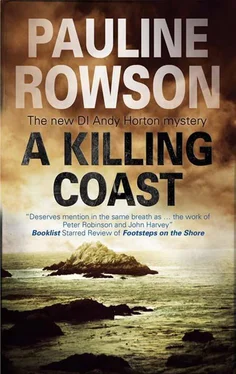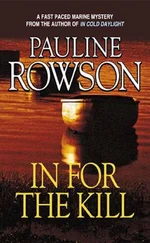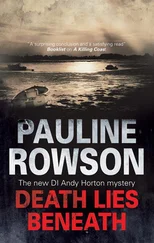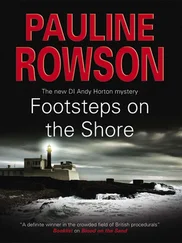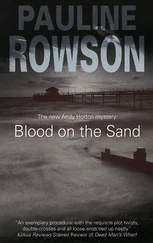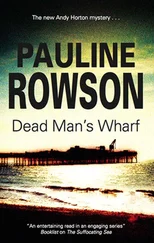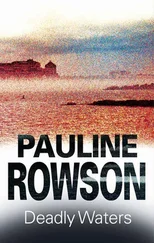Pauline Rowson - A Killing Coast
Здесь есть возможность читать онлайн «Pauline Rowson - A Killing Coast» весь текст электронной книги совершенно бесплатно (целиком полную версию без сокращений). В некоторых случаях можно слушать аудио, скачать через торрент в формате fb2 и присутствует краткое содержание. Жанр: Полицейский детектив, на английском языке. Описание произведения, (предисловие) а так же отзывы посетителей доступны на портале библиотеки ЛибКат.
- Название:A Killing Coast
- Автор:
- Жанр:
- Год:неизвестен
- ISBN:нет данных
- Рейтинг книги:4 / 5. Голосов: 1
-
Избранное:Добавить в избранное
- Отзывы:
-
Ваша оценка:
- 80
- 1
- 2
- 3
- 4
- 5
A Killing Coast: краткое содержание, описание и аннотация
Предлагаем к чтению аннотацию, описание, краткое содержание или предисловие (зависит от того, что написал сам автор книги «A Killing Coast»). Если вы не нашли необходимую информацию о книге — напишите в комментариях, мы постараемся отыскать её.
A Killing Coast — читать онлайн бесплатно полную книгу (весь текст) целиком
Ниже представлен текст книги, разбитый по страницам. Система сохранения места последней прочитанной страницы, позволяет с удобством читать онлайн бесплатно книгу «A Killing Coast», без необходимости каждый раз заново искать на чём Вы остановились. Поставьте закладку, и сможете в любой момент перейти на страницу, на которой закончили чтение.
Интервал:
Закладка:
‘How often would you say the dress has been worn?’
Horton knew that Trueman would have the full forensic report, which would hopefully give them that information and more about where the dress had been kept. Unless the submersion in the sea had destroyed the evidence, and that might have been exactly what the killer had intended.
‘It’s difficult to be certain,’ Dr Adams answered, ‘because the fabric is of such high quality and the stitching so superb. But there is no sign of wear, no fading, and the seams are as strong as if they’d just been sewn. I would say it’s not been worn very much at all.’
And was that because the owner had died shortly after buying it?
‘Can you tell us where it was bought?’
‘Not precisely, and I couldn’t swear on oath to it, but most probably in New York.’
‘So a woman who lived abroad or travelled?’
‘Or was there on holiday or business, either alone or with her husband. Unless it was purchased for her by someone and brought back to this country. But equally, Inspector, she could have bought it in London. I’m sorry to be so vague.’
‘No, you’ve been a great help. Would records of Thea Porter’s customers still exist?’
‘Unlikely but you could try the Victoria and Albert Museum. They might be able to help you.’
Horton thanked her. On the way back to the station he chewed over what he’d learnt and where that took them. Reading his thoughts, Cantelli said, ‘Just because she bought the dress in 1976 or thereabouts doesn’t mean to say that’s when she disappeared or died. She could have lived until this year. But if the dress belonged to the late Harold Jenkins and his estate, then surely it would have been sold or destroyed long ago.’
Horton agreed, and there was no connection they’d discovered yet between Yately and the late Harold Jenkins. There was nothing for it but solid background work, checks and double-checks. Horton said nothing of his idea about a missing woman, or one that had died in mysterious circumstances during the seventies. It didn’t seem relevant now because, as Cantelli had indicated, the woman could have lived a lot longer than that. Nevertheless, the idea had taken root in his mind and Horton knew that he would have to check.
In the major incident suite Horton relayed to Trueman and Uckfield what Dr Louise Adams had told them.
Grouchily, Uckfield said, ‘Marsden’s just called in to confirm that Abigail Lisle was five foot four and slim, a size ten dress, according to her daughter, but that doesn’t mean Lisle didn’t kill Yately or Hazleton and then himself, or that Abigail hadn’t had an affair with both men. The dress could still have belonged to her. It could have been her mother’s or a friend’s or a charity find, and she knew its value and treasured it. Lisle couldn’t bear to part with it on his wife’s death until he discovered her diaries, or maybe Yately’s diaries, when he was in his flat one day, and made Yately wear it and drown in it as some kind of sick ritualistic killing.’
Horton could see that Uckfield was not going to give up on his theory. Trueman confirmed that forensics had also said the dress had been barely worn, but they could get little else from it except salt water, sand and grit. They were still analysing Hazleton’s clothes. It was agreed that tomorrow Trueman would contact the V amp;A and Horton would accompany Oliver Vernon around Hazleton’s house. Trueman would also continue the checks on Victor Hazleton and Colin Yately. And Dennings’ team in the temporary incident suite at Ventnor would start checking Harold Jenkins and the other names in the archive file, though Uckfield left no doubt he thought it a waste of time. Horton could see the investigation was set to be a long haul and was clearly going to drag on beyond Saturday unless another body turned up, such as Arthur Lisle’s.
Cantelli went home. Walters had already left and there was no sign of Bliss. A disgruntled Uckfield prowled the major incident suite like a dyspeptic lion and Horton slipped back to his office while Uckfield took a call from Dennings. There Horton settled in front of his computer ignoring his paperwork and called up missing persons files for 1976. He had no idea what he was looking for but he started with the local area, it seemed as good a place as any, and the victims were local so perhaps the woman had been too.
There were two missing women for 1976, neither fitting the profile, none for 1977 and one for 1978, Jennifer Horton. There were also two missing men. In 1979 and 1980 there were three missing teenage girls and two boys, one aged fourteen, the other nineteen. Horton continued into 1981 and 1982 but nobody matched the profile or background that Dr Louise Adams had given him. This line of enquiry was clearly a dead end but he found himself returning to 1978. This time he checked out the profile of the two men who had gone missing the same year as his mother. One was aged forty-three, married with three children, who had worked in a factory on the Dundas Lane estate. It was known that he’d been suffering from depression. He had left for work one day and never returned. Horton spared a thought for the man’s wife and children who had lived with uncertainty for so long. The other man was single, aged thirty-one. He was a local accountant whose mother had reported him missing when he didn’t arrive home from work on 2 December 1978. It transpired that he had never arrived at work. There was no record of him having been depressed and no reason why he should disappear. Was the mother still alive? wondered Horton. How had she coped with the mystery of her missing son? Had it eaten her up over the years? He guessed so.
He stood up and stretched, again considering what Adrian Stanley had been trying to tell him. Mentally he replayed the meeting in that small hospital room and Stanley’s struggle to speak. But he still couldn’t make sense of it. Perhaps if he visited a second time Stanley might be better. That would have to wait until tomorrow. It was time to go home to the boat. There was nothing more he could do here. If the enquiries into the dress and those into the archive file led nowhere, and if Lisle didn’t turn up and there were no reported sightings of him or Yately, where did that leave them? What other avenues could they explore?
Horton stared out of the window as he considered this. There were still the missing notes. He recalled the book in Lisle’s house on the history of the Island. Had their research led them to discovering something valuable or something that someone was prepared to kill for?
He grabbed his jacket and helmet. Tomorrow he’d get the name of the author of that book on local history he’d seen on Lisle’s table and arrange to see him while he was on the Island. He had no idea where it would lead, probably nowhere, but when there was sod all else to go with it was worth a try. And tomorrow he’d hear what Oliver Vernon had to say, not only about Hazleton’s antiques and paintings but about Russell Glenn. He’d also have Glenn’s guest list, if PC Johns didn’t forget. Not that he thought any of the names would leap out at him as villains; in fact he was sure they wouldn’t. He didn’t know what he expected from seeing the list and neither was he sure what he’d gain from seeing what had been written about the little boy abandoned by his mother on a foggy and chilly November day in 1978, but in just over twelve hours he’d find out.
EIGHTEEN
Friday
‘Is this all there is?’ Horton asked, incredulous, looking up from the few pieces of paper in front of him at the stout, sullen-faced woman standing the other side of the scratched wooden desk. The room reminded him of an interview room at the station, except at the station the paint wasn’t peeling from the walls. She looked like a prison warder standing there in her black skirt and jacket and crisp white shirt.
Читать дальшеИнтервал:
Закладка:
Похожие книги на «A Killing Coast»
Представляем Вашему вниманию похожие книги на «A Killing Coast» списком для выбора. Мы отобрали схожую по названию и смыслу литературу в надежде предоставить читателям больше вариантов отыскать новые, интересные, ещё непрочитанные произведения.
Обсуждение, отзывы о книге «A Killing Coast» и просто собственные мнения читателей. Оставьте ваши комментарии, напишите, что Вы думаете о произведении, его смысле или главных героях. Укажите что конкретно понравилось, а что нет, и почему Вы так считаете.
